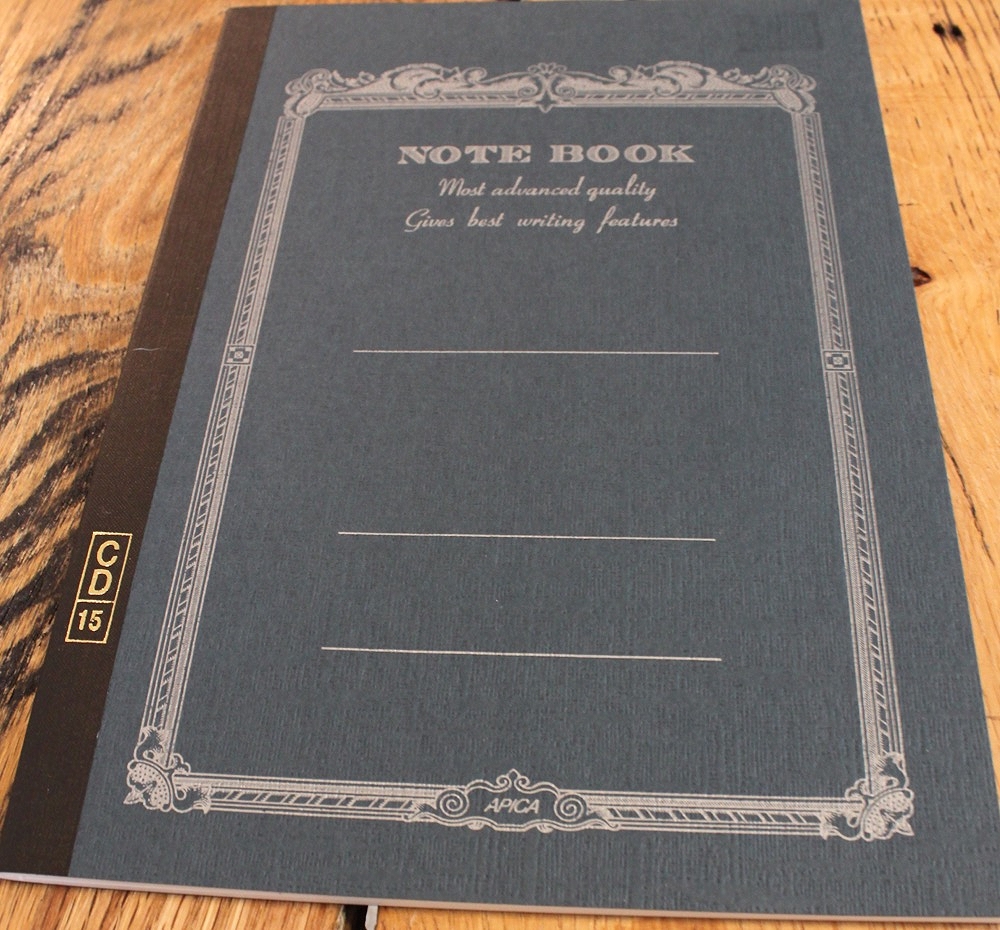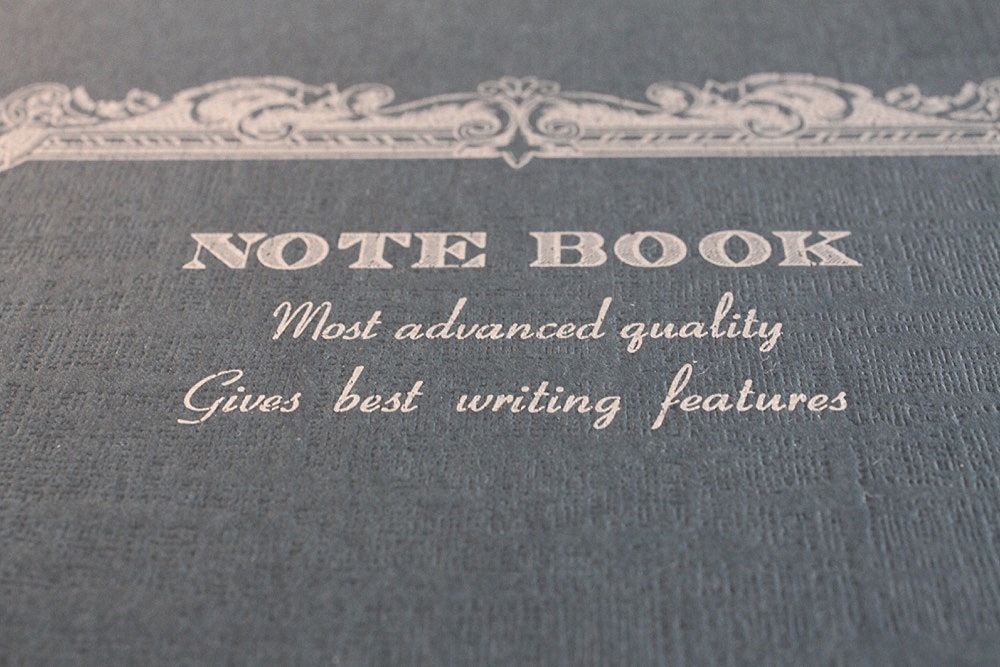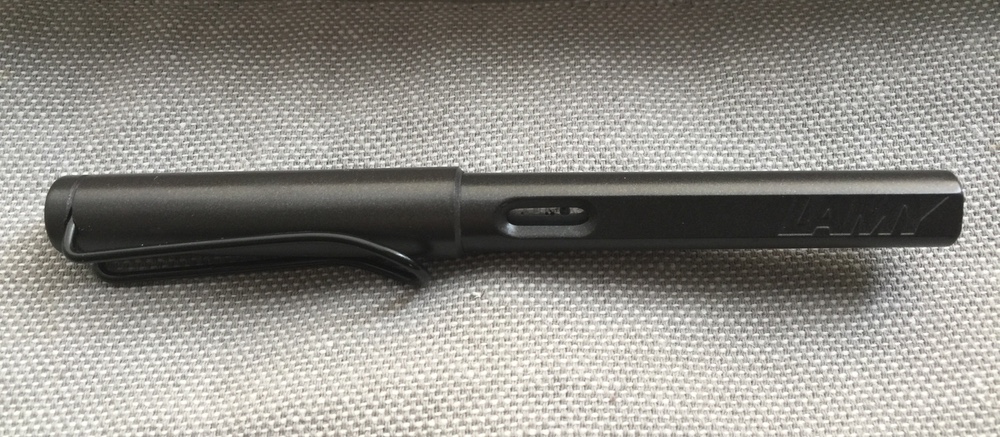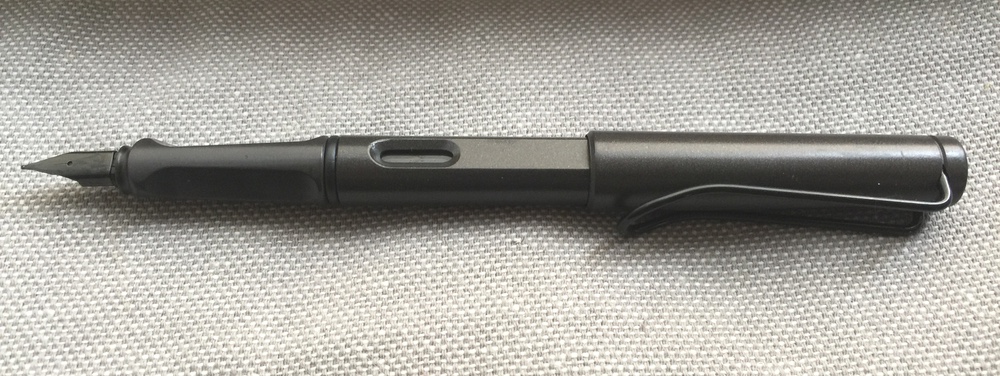Nothing soothes a traveller's stomach quite like an airline omelet*. I've made the 12-14 hour flight to Japan seven or so times, and it hasn't gotten any easier, even with the complimentary bottles of sake. I lived in Japan for six months as a student and return yearly to lead a group tour. I jumped at the opportunity to go back to Japan for a conference at a university in Kyoto. I love the country and culture.
I discovered the Muji brand in Japan as a student in search of cheap pens and notebooks. Muji makes everything from fountain pens to pants. Their stores are huge, and everything is cheap but relatively high quality. I purchased a little 195x137mm kraft notebook there as a student and was hoping to resupply.
I stopped by the campus store at the university, in hopes of finding my notebook. There were no Muji's in site, but there were aisles of pens and a huge Rhodia notebook display. The fancy pen display case held a Pilot Vanishing Point, what I would consider to be my "grail" pen. Considering the cheap ballpoints and spiral notebooks in my university's bookstore, this place was a candy store. This was the first time that I'd ever seen a selection of fountain pens in person, and it was tempting to make a big move and walk away with a Vanishing Point. Alas, there was only one color and I just wasn't ready to make the leap.
I picked up an awkwardly translated Apica notebook. These notebooks are a great size and thickness for desk note taking, and the paper, like paper in most Japanese notebooks, is dense and high quality. They're also a steal at $1.25 per notebook, making them perfect for the Japanese student on the go.
The conference organizers provided a Kokuyo A4 Report Pad which has similar paper quality at first glance. Japan certainly knows how to do stationary.
This imposing pad is clearly for very official Japanese business only.
I made my way back to the Haneda Airport, after the conference ended, and stopped to see two of my best friends from America. They knew that I was in search of a Muji store and scouted out the best store in Tokyo. The Muji entrance was through a store called Loft, so we stopped there to take a look around. If the campus store was a candy store, this place was the entire chocolate factory. There were aisles and aisles of rollerballs, fountain pens, pencils, and stationary, all free to touch. Display cases housed the more expensive pens, like the Lamy 2000 and several others in the $400-$500 range. I've heard about many of these pens, but I've never seen so many in person. It had been a year or so since my Safari hit the shelf, but it was time to give fountain pens another shot.
I was still sore from my Safari experience, so I decided to look for a pen in the $30-$50 range. The choices were overwhelming, and I couldn't settle on a decision. I picked up a Rhodia Dot Pad, but was prepared to walk away without a pen. I walked through the aisles one more time and noticed a slick looking Lamy demonstrator. I assumed that it was part of the Al-Star line, not realizing that the Al-Stars were all made of aluminum. It was a gorgeous pen and well under my $50 limit. It turns out that this was the demonstrator version of the Lamy Safari, called the Lamy Vista. I was now in possession of two Safari's, one of which was a complete dud. Hopefully the Vista would come with 100% less disappointment.
The Lamy Vista is a beauty. It's dramatically better-looking that its non-transparent Safari counterparts.
Muji turned out to be the least exciting part of the day, considering the great time with friends whom I rarely see and the chance to geek out over the pens and paper at Loft. I found my precious Muji notebook, completing my epic quest, but also picked up a few other toys, all of which I hope to review here. Most importantly, I picked up a renewed interest in fountain pens.
The complete Japan pen, pencil, and paper haul.
I inked up the Vista when I got back to the states, and I've been using it for a few weeks now without a single leak or case of inky fingers. This pen is amazing! It turns out that my experience with the Safari was just a fluke. It still sits on the shelf, but my Vista travels to work with me daily. My second foray into fountain pens was a huge success, and I plan to post my first pen review ever in the near future.
It's amazing how one bad experience or criticism can kill a new hobby or passion. Thanks to a faulty pen, I was prepared to give up on fountain pens altogether. Although my analog journey had a bumpy start, I'm glad that I gave it a second chance. For those considering the purchase of a fountain pen, don't make the mistake that I did by purchasing it from Amazon. Although some manufacturers distribute through the service, do your research first, and consider using a site like JetPens.com, if there are no pen stores near you. Pen sites may be more expensive, but great customer service and quality control are worth the few extra bucks.
Miss part one? Read it here!
*May not contain actual eggs.










